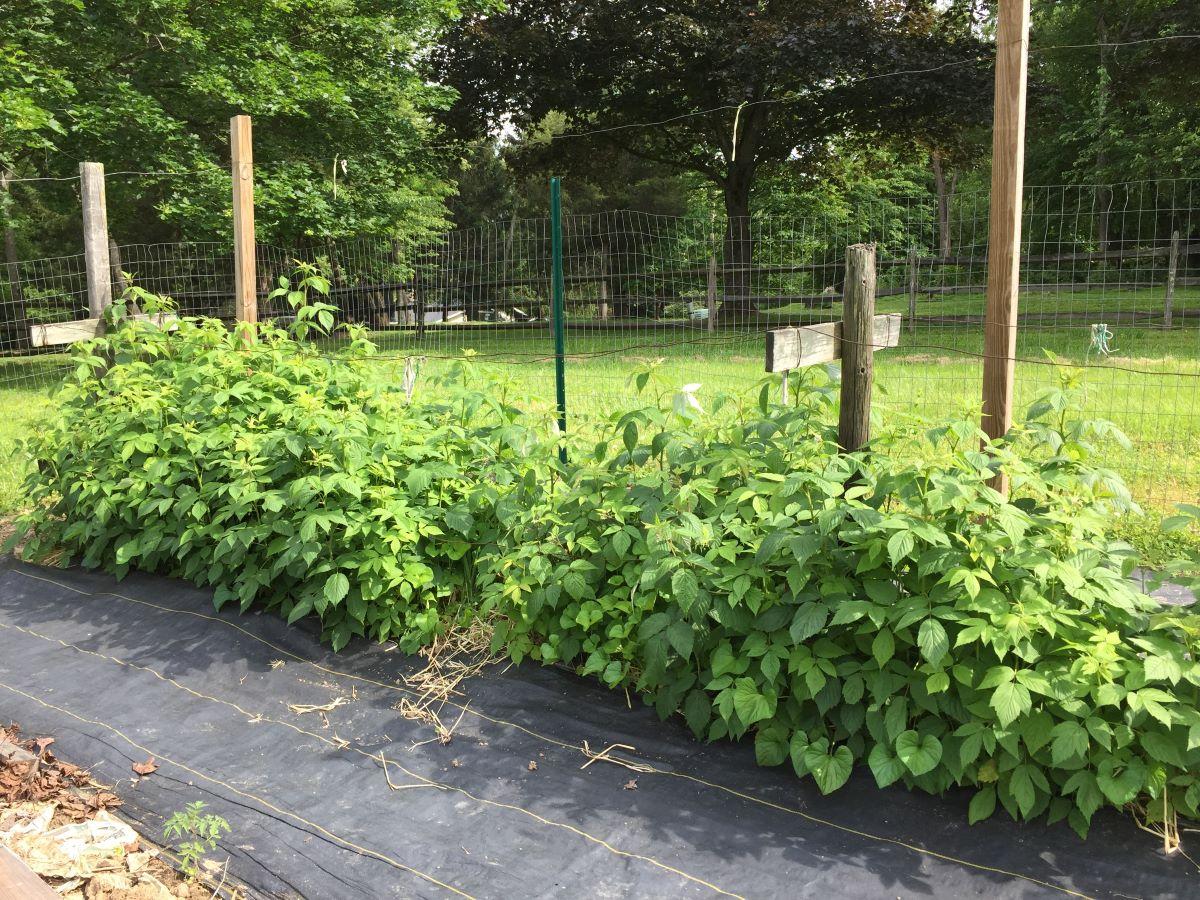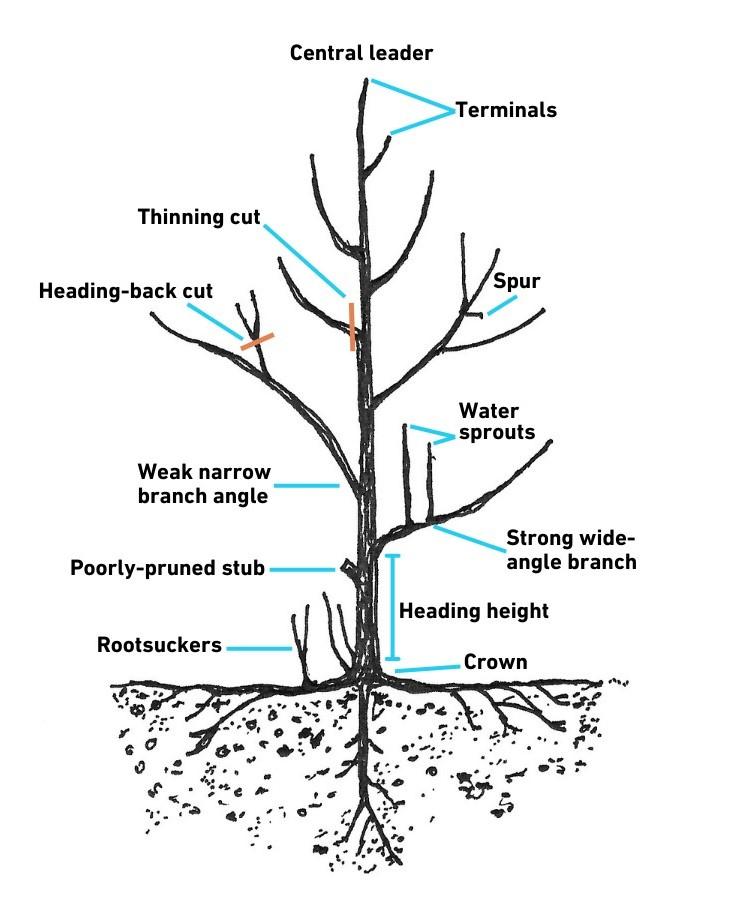Proactive plant care can support a fruit tree or shrub through many years of productive harvests. As relatively high-maintenance landscape plants, success with fruit depends on regular monitoring of plant health and intervening early to prevent significant damage from pests, diseases, or wildlife. By promoting vigorous growth and keeping plants healthy, they will be more resilient when facing stressors that could weaken plants and reduce fruit production.
Watering
- Small fruit plants have shallow, fibrous roots that are vulnerable to drought stress, especially blueberries.
- Keep small fruit plants well-watered for the first 2 years to get them established, especially in summer and fall when rainfall is sporadic or insufficient.
- Continue to water fruit plants after the last harvest during dry periods. Most fruit plant buds for next year’s growth are produced in late summer and early fall.
- As a guide, the typical recommendation is one inch of water per week during the growing season (65 gallons per 100 square feet of planting area), whether from rain or irrigation. The need for consistent moisture increases during flowering and fruiting. Many fruit plants develop buds for next year’s crop in late summer or early fall. Drought stress at that time can reduce next year’s harvest because fewer buds will form or buds may die during dormancy.
- To discourage disease problems, water in the morning, and avoid wetting the foliage. Soaker hoses and drip irrigation conserve water and keep foliage dry. Overhead irrigation (like with a sprinkler or hose spray nozzle) has the advantage of cooling small fruit plants during extremely high temperatures.
- During dry periods, tree fruits should be irrigated for the first 3 to 5 years. Stone fruits (cherry, peach, apricot, etc.) are more shallow-rooted than pome fruits (apple, pear) and more vulnerable to drought stress. Peaches are most sensitive to drought at the ripening stage when the fruit is rapidly increasing in size.
Fertilizing
Fruit plants should be fertilized based on soil test results and plant needs. Lawn fertilizers applied to turfgrass growing near fruit plants may reduce the fruit’s fertilizer needs. Most fruit plants are fertilized in spring at flowering time.

